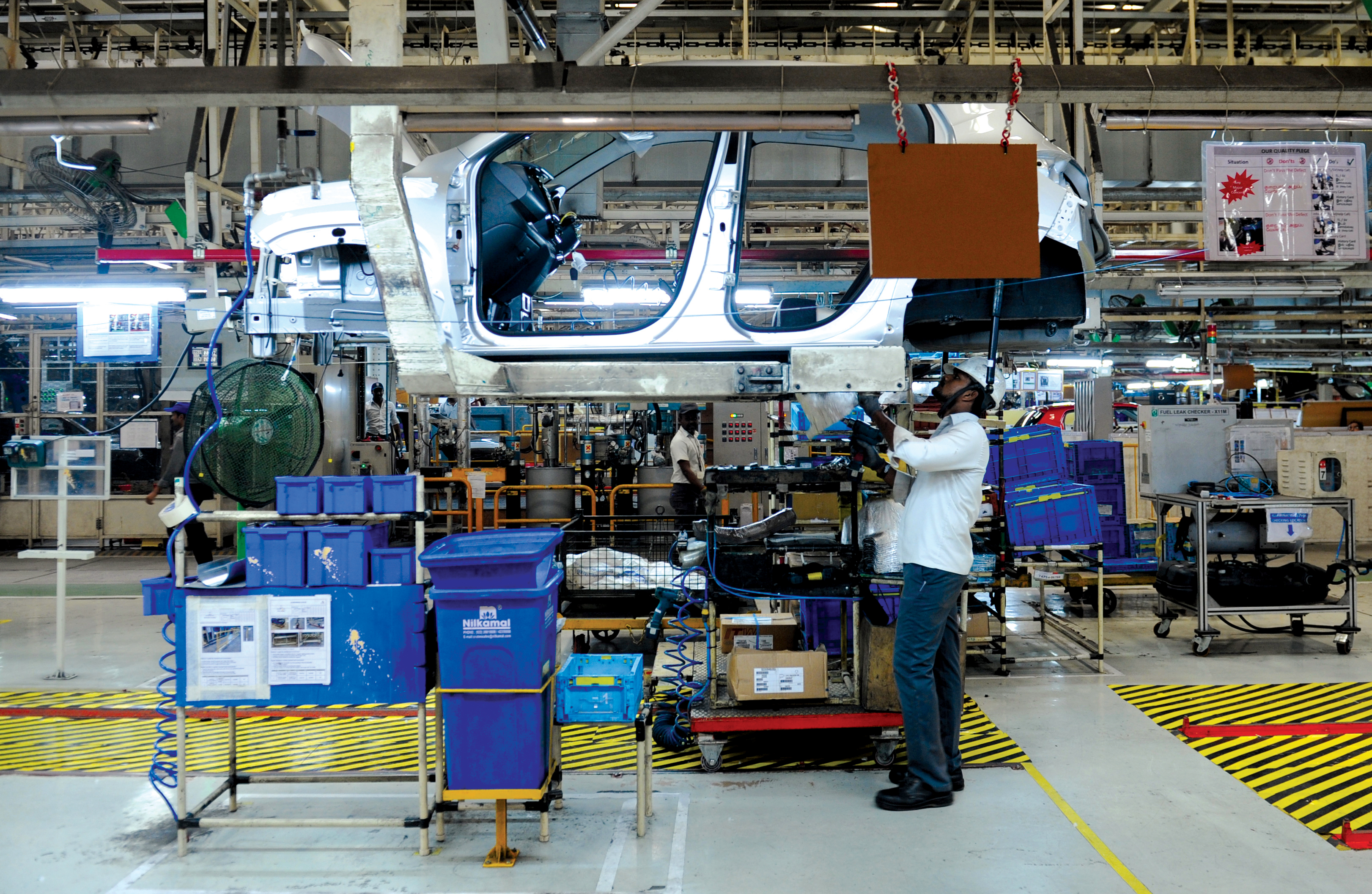Meet the twenty-something workers in Gurugram’s automobile industry who lost their jobs this year and now hang around NCR’s major intersections in the hope of being hired for a day’s unskilled work
Seated at the roundabout in Manesar’s ‘Labour Chowk’, Malik is hoping that some work might come his way today. The worry lines on his face narrate the entire story of what is brewing in India’s automobile sector.
The automobile industry has been seeing a plunge in demand and subsequently cut down production since the new year began. It has all the makings of a crisis, with more than 10 lakh jobs at risk in India. The industry employs workers both on rolls and on contract basis, and the latter is facing much heat in the slowdown.
The sector had started off at a good pace in 2018-19, with sales growing by 18% across categories to almost 70 lakh units in the first quarter (April-June 2018). During this honeymoon period, automobile companies were pocketing profits as the sale of passenger vehicles was up 20%, two-wheelers grew at 16% while commercial vehicles crossed the half-century with sales going up by 51.55%
Malik, who hails from UP’s Hathras district, landed three jobs in just one year, only to be laid off from all three. First, he worked for Dantal Hydraulics, which manufactures cylinders for JCB machines. “I used to get a salary of Rs 12,700 but after the slowdown hit the industry, in January (2019) I was asked by the company to leave, along with 49 other employees.”
“Thereafter I joined Maruti Suzuki for a week in July but then they ousted me, saying I have enough experience but less qualification (I studied upto Intermediate). Honda gave me work in the maintenance department of their two-wheeler factory in Manesar on a salary of Rs 10,500 but after a month, I was sacked. The salary for that one month is yet to be credited in my account.”
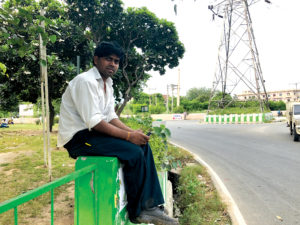
It was August 14 when he was asked by the company to discontinue work and was relieved of his duties. “I went back home as I couldn’t find any other job,” he says. “Then I returned to the city. I am still searching for a job but none is available, not even in the unskilled sector.”
Back home, depending on him, are his wife, a toddler who is 10 months old and old parents. “I also have a sister and two elder brothers who are currently earning for the family. But for my wife and my child, I am their bread earner. The drop in demand and sale of cars has brought a calamity for all of us,” says Malik.
Malik says he never took a formal loan but has to repay Rs 50,000 borrowed during the birth of his son, as the surgery cost around Rs 1.20 lakh. “My son was born on December 26, 2018 and I lost my job on January 5, 2019, so the happiness was shortlived. Since then, I have been struggling.”
“I am forced to carry out unskilled labour even after having an adequate amount of experience. These days, I accompany one of my acquaintances to fit tubelights in commercial buildings and earn around Rs 400 on a good day,” he reveals.
The downturn in the auto industry started last year itself and by the end of July 2018, the domestic passenger vehicle sales declined for the first time in nine months. Since then, the decline in demand mounted, creating negative growth for the entire sector. In July 2017 sales had picked up after benefits provided under the newly implemented Goods and Services Tax (GST). However, post August-September 2018, demand decelerated.
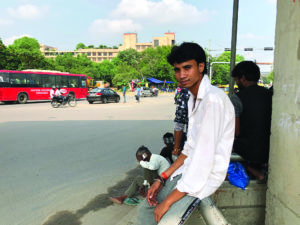
Ajay, who was employed in Dantal Hydraulics since 2015, also lost his job in May. Since then, he has been searching for work – any work. “The company asked me to go on casual leave for at least 15-20 days as it is a regular process of ‘clearance’ and promised that I’ll be called up later on. It’s going to be four months since. I have not got any call from the HR department,” said Ajay.
“I did apply to other companies but never got any response. They take our resumes and after that there is a dead silence. I have two children: one is four years old, the other is two. It gets tough to feed everyone and it doesn’t seem right to ask siblings for money,” adds Ajay, who has five brothers and lives in a joint family.
When asked about any loan or credit, Ajay says, “No such situation has risen until now but one of my friends has taken a loan on my account and it’s his worry to pay it back, although he is also unemployed right now.”
Ajay says he has never seen such large-scale lay-offs in his career and blames government policies like GST as the prime reason. “My boss at the Dantal assured me that he will get me some work or will recall me for work. He tried his level best but even then, I remain unemployed. I have studied until BCom (Bachelors in Commerce) and yet like others, finding job has become a difficult job.”
Recalling his track record, Ajay said he has worked with Hero, Maruti, Tata and AutoTech and has been earning his living since 2010. In this one decade, no such dire situation occurred. “One good thing is that during my unemployment phase, I was able to build my new house with the savings,” he says. “I thought that after returning from my village, it won’t be tough to get a job but Fate had other plans in store.”
According to the Society of Indian Automobile Manufactures (SIAM), “The industry produced a total of 9,724,373 vehicles including passenger vehicles, commercial vehicles, three-wheelers, two-wheelers and quadricycle in April-July 2019 as against 10,883,730 in April-July 2018, registering a de-growth of -10.65% over the same period last year.”
Asked for job loss data, SIAM in its mailed response to Patriot says, “Federation of Automobile Dealers (FADA) confirms the loss of 2.3 lakhs jobs at dealerships, while Automotive Component Manufacturers Association (ACMA) confirms loss of about 1 lakh jobs at component manufacturing and 15,000 at the OEMs.”
We managed to speak to four workers who lost jobs in factories. They can be seen hanging around ‘labour chowks’ in Gurugram and Manesar hoping to be picked up for daily wage work.
One of them is Manoj, who hails from Chitrakoot in Madhya Pradesh. He used to work at Gurugram’s Sharda Motors, earning a basic salary of Rs 10,200 but had to leave the job after just three months as the cycle of retrenchment started. At 21, he carries a heavy baggage of expectations as he waits for work at Bristol Chowk. He said it’s tough to survive as he also has to pay rent while he lives here.
“I have studied till Intermediate and am relatively new to the industry but joblessness has overtaken me at the beginning itself,” he rues.
He worked in the assembly section of Sharda Motors from May to July but due to a sudden decrease in work and demand, was asked to leave.” When asked whether he tried for job at Maruti and Honda,
Manoj replies, “They don’t have any jobs at all, and on top of that they have been relieving most of their staff in the last few months.”
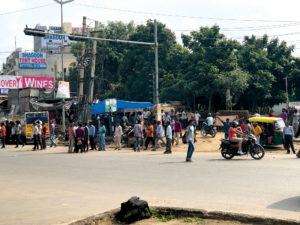
The first in the family to migrate to city to make out a living, Manoj says, “My parents are daily wagers at a farm. I have two sisters and a younger brother. It is tough to save money to send home.”
“My sisters need to get married, younger brother is studying and father is also on medication. Expenses are high but the government is nowhere to be seen to help us. Modiji will ruin this country,” says an anguished Manoj and his group of friends.
The tragedy is that this young man, after a promising start in a factory, is forced to take up unskilled labour to earn Rs 400-500 a day. That might be sufficient for his survival but the question for this youngster remains: What about his family?
When Patriot contacted Kuldeep Janghu, General Secretary of Maruti Udyog Kamgar Union, Gurugram, he said that a slowdown in the automobile sector was last seen in the year 2000 and it has returned after 19 years.
Janghu said, “Since sales went down in the past 5-6 months, companies which make auto parts have laid off contractual workers.” On being asked about the condition of truck drivers who rally the cars from manufacturing units to the dealers, Janghu asserted that “Their situation is also bad. The entire industry is disturbed.”
Reports had come in that Maruti has also laid off many employees, to which Janghu explained, “Yes, our company has sent 200 contract workers on holiday but now we are in a process to call them back. Actually, we have reduced the hiring of TW workers (they work for only 7 months) which used to be a majority in our company.”
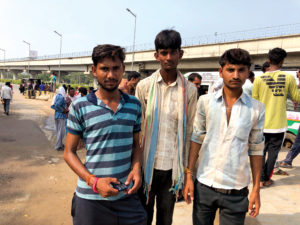
In his analysis, the government is “not concerned” about the automobile sector despite it being the backbone of India’s economy. He says, “Bharat Stage VI will begin in April 2020 and that can be one of the reasons for buyers postponing purchases. Thereafter hike in GST, car loan rates and a complete breakdown of traffic system has made consumers hesitant.”
Another victim of the crisis in the automobile sector is 20-year-old Amar, who has studied till 12th standard and just embarked on his career. He started working in a Hero Moto Corps agency a year back. “The work was going well. But I took leave for some days and when I returned, I was told that as work has dramatically reduced, the company is firing a lot of employees and I was also axed,” says Amar.
Amar has two sisters (one of whom is married) and a younger brother, still in school. The family lives in Gurugram’s Wazirabad village. “I can’t get a job in Maruti or Honda as we don’t know anyone there. We require support or backing to get into any company — only submitting CVs won’t work.”
“I feel bad that I have experience in the two-wheeler industry and know the nitty-gritty of engines and tyres but am forced to work in Megapolis Mall (MG Road) for a living. There seem to be no vacancies in the automobile sector and those who are still working are getting ousted,” narrated Amar, who comes from Jhansi district.
“My father is a daily wage labourer and we took a loan to get one of our sisters married, but the debt is yet to be paid,” details Amar, whose friends ask whether being featured in the news can change their fortunes.
Asked about the slump, SIAM gave multiple reasons for the negative demand trend in the automobile sector and high incidence of taxation is one of them. “Reduced availability and affordability of finance from the NBFC and banking sector, while increased costs of vehicles due to many safety and regulatory norms getting bunched together over a period of two years,” are some of the reasons given.
Adding to the possible reasons for the slump, the SIAM states, “Significant increase in insurance costs at the time of purchase due to Supreme Court mandate and an increase in axle load for trucks leading to surplus capacity in the market, led to the poor sentiment in the market due to lower consumer confidence.”
When asked about the measures the government can take to safeguard the auto sector from future shock, the SIAM spokesperson says that some government intervention amid the current grim situation in the industry is the need of the hour. It adds that the government should address finance-related issues of banks and NBFCs which play a major role in auto financing.
SIAM suggests reducing GST rates on vehicles from 28% to 18%. This “could help in absorbing some part of the cost increase due to mandatory regulations. Although it could be temporary, but it is required to kickstart the growth in the industry.”
Other key points raised by SIAM to revive the auto industry is “announcing a voluntary incentive-based vehicle scrappage policy which could take old and polluting vehicles off the road and also create incremental demand for vehicles.”

